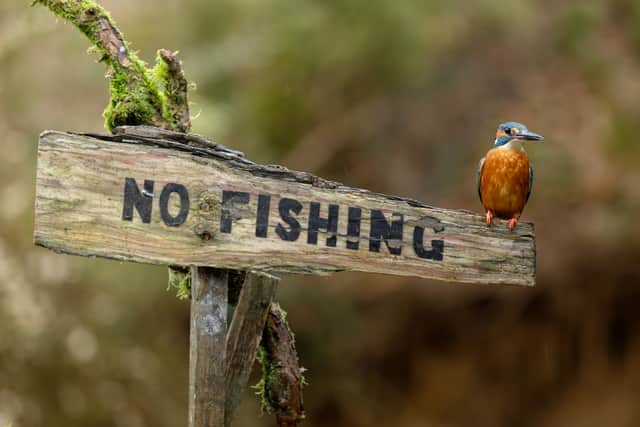'No fishing': Wildlife photographer catches cheeky kingfisher flouting the rules
and live on Freeview channel 276
A photographer has managed to catch a cheeky kingfisher flouting the rules in an remarkable set of pictures - as the brazen bird perched on top of a ‘no fishing’ sign while it scoured the river for its next meal.
Tony Nellis snapped the kingfisher using the sign as a vantage point on Saturday (9 March) afternoon, on the River Deerness in County Durham. After spying the hungry bird on the prowl, he set up his camera about 50 feet away from the sign, and settled in for a lengthy wait.
Advertisement
Hide AdAdvertisement
Hide Ad"The sign was placed a few feet above the surface of the river allowing the kingfisher a perfect view of the water," he told SWNS. "The bird darted several times into the river for fish. They are so fast it’s extremely difficult to capture them, but sometimes you get lucky."


It took a few hours, but his patience paid off, he said. "It kept swooping down and coming back up to the same spot which meant I had plenty of chances to picture it. The fact it was using a ‘No Fishing’ sign was brilliant. It made for a cracking set of pictures."
Kingfishers, known for their brilliant blue and vivid orange plumage, are widespread across most of the UK - with the exception of northern Scotland. They can also be found across much of Europe and North Africa, but migrate south in areas where rivers freeze over the winter months.
The small birds are only about the size of a sparrow, with adults weighing in at about 35 grams. They have long beaks, which they use to snare their preferred prey - small fish - as they dive, with special eye adaptations that allow them to see underwater.
Advertisement
Hide AdAdvertisement
Hide AdLocally they are doing well, and their UK conservation status is listed as 'green'. However, the Royal Society for the Protection of Birds (RSPB) says that the unmistakeable species in hugely reliant on waterways, and both pollution and "unsympathetic management" of the watercourses they call home pose significant threats to their future.
Comment Guidelines
National World encourages reader discussion on our stories. User feedback, insights and back-and-forth exchanges add a rich layer of context to reporting. Please review our Community Guidelines before commenting.
